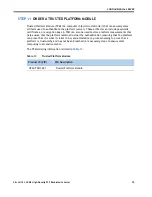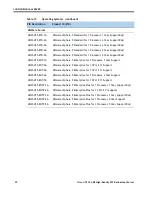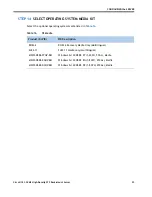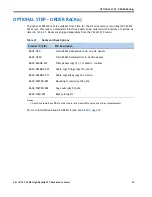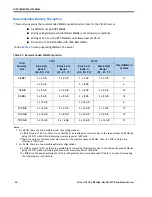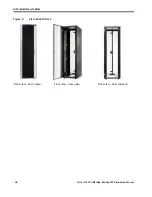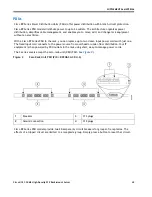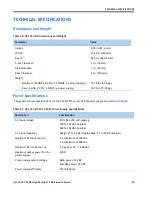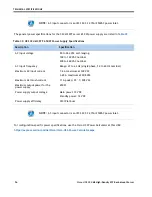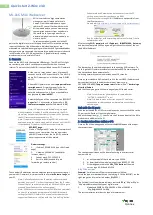
Cisco UCS C24 M3 High-Density SFF Rack-Mount Server
SUPPLEMENTAL MATERIAL
43
Memory Population Rules
When considering the memory configuration of your server, you should consider the following items:
■
Each channel has two DIMM slots (for example, channel A = slots A0 and A1).
— Each channel can operate with one or two DIMMs installed.
— If a channel has only one DIMM, populate slot 0 first (the blue slot).
■
When both CPUs are installed, populate the DIMM slots of each CPU identically.
— Fill blue slots in the channels first: A0, D0, B0, E0, C0, F0
— Fill black slots in the channels second: A1, D1, B1, E1, C1, F1
■
Any DIMM installed in a DIMM socket for which the CPU is absent is not recognized.
■
For optimum performance, populate at least one DIMM per memory channel per CPU.
■
When populating DIMM slots, multiples of 6 DIMMs are best for achieving optimum
performance, since there are 3 memory channels per CPU socket and 2 CPUs must be
populated.
■
At 1 DPC and 2 DPC, 1600-MHz DIMMS will run at 1600 MHz (provided the CPU supports 1600
MHz DIMMs) and 1333-MHz DIMMs will run at 1333 MHz.
■
When mixing DIMMs, the following rules need to be followed:
— When mixing DIMMs of different densities (sizes), populate DIMMs with the highest
density first. For example, if you have to mix 16 GB with 8 GB DIMMs, populate 16
GB DIMMs in blue slots (or bank 0) and then 8 GB in black slots (or bank 1).
— When mixing DIMMs with different ranks, populate DIMMs with the higher rank first.
For example, populate 16 GB 2R or 8 GB 2R before 4 GB 1R DIMMs.
— DIMMs of different sizes (4 GB, 8 GB, 16 GB) can be mixed across different channels.
Total memory size in a single channel should be the same. For example, if you are
mixing 4 GB and 8 GB DIMMs to achieve total 72 GB (6x8 GB + 6x4 GB) for a server,
then populate blue slots with 8 GB DIMMs and black slots with 4 GB DIMMs and total
memory size should be 12 GB across all 3 channels for both CPUs.
— When mixing DIMMs, all the DIMMs in the server must be the same speed.

